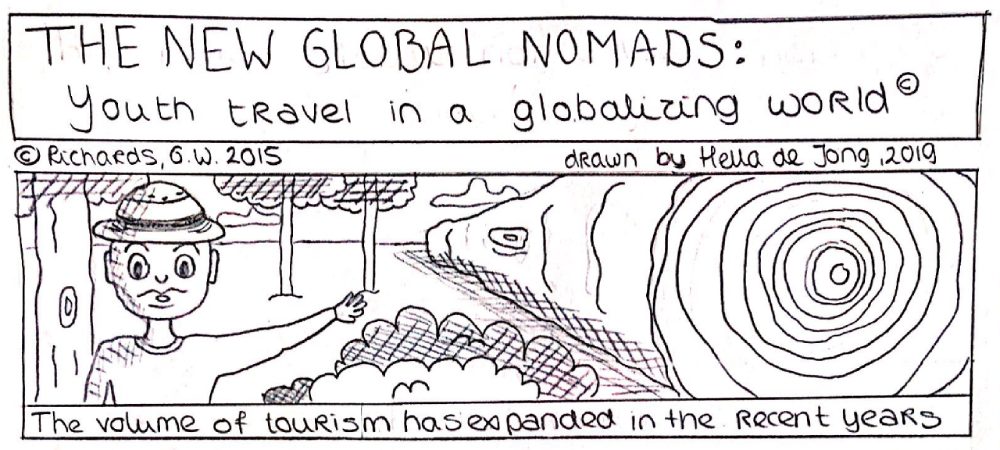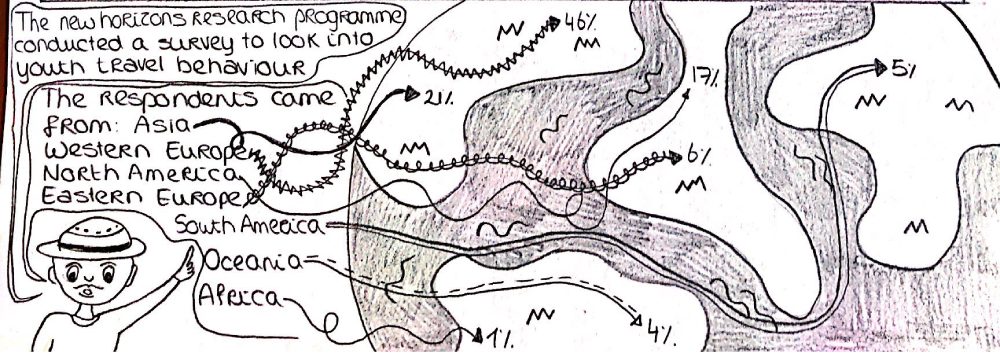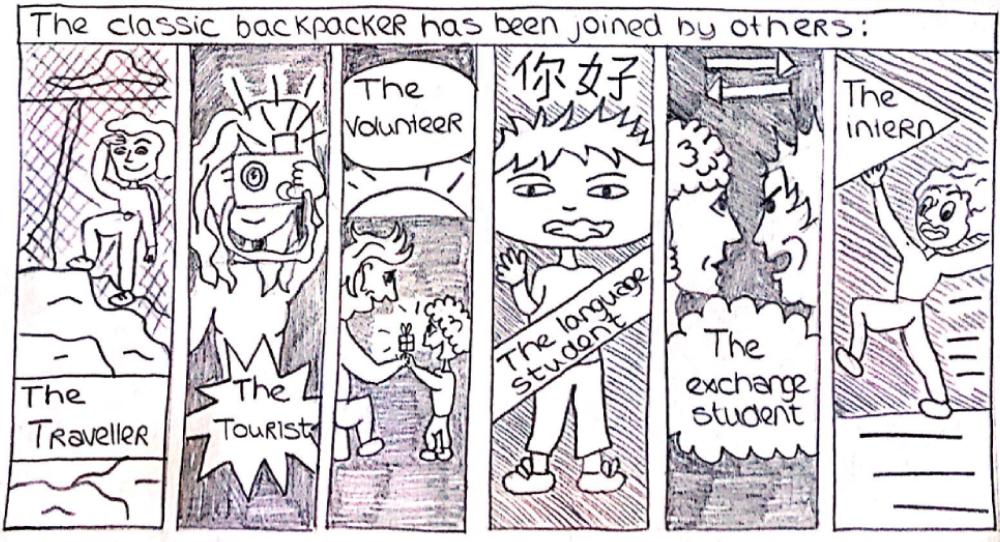News
Manchester, United Kingdom — 22-25 September 2009WYSE Archives
![]()
Travel, as illustrated by visual communication
Photography is currently the go-to asset in the travel industry’s marketing tool kit, but some companies are sketching a fresh approach that is less reliant on professional photography and instead draws on something everyone can do.
Drawing: the basis of visual communication
“Drawing is a basic method of human communication, which goes back at least to cave paintings, and it forms the basis for most all things in society you see”, said Neil Cohn, PhD, Assistant Professor at Tilburg University’s Department of Communication and Cognition and founder of the Visual Language Lab. “Advertising, fashion, architecture, design, films… just about all of those first started as drawings before becoming tangible objects.”
Translating from word to image
Hella de Jong is a student at Tilburg University in The Netherlands who has studied International Tourism Management and Consultancy. For a course titled Visual Thinking and Composition Hella “translated” an article published by Professor Greg Richards, The new global nomads: Youth travel in a globalizing world, which draws on data from WYSE Travel Confederation’s New Horizons III survey.

As part of the course students learn basic drawing and visual communication skills and a final project requires students to translate a scientific paper into a short comic, making scientific content more accessible to a wider audience. The course in visual communication is taught by Neil Cohn, PhD.
“Visual communication is often thought of as the graphic or photographic elements used in culture, like in advertisements or comics, but at its base is something more basic: drawing,” he said. “Taking advantage of the visual form, and developing drawing skills, can enhance communication beyond text.”

The dawn of a new day for drawing?
In the age of digital communication and video advertising, it is easy to forget the art of drawing. However, some companies are turning to illustration and animation as a unique visual technique against the ubiquitous backdrop of stock photo and video marketing. Brands like Etsy, WeTransfer, and Mailchimp are utilising illustration to communicate online. Rude Health and Tony’s Chocolonely are food brands with bold packaging that feature graphic illustration. In travel, Airbnb has utilised illustration to some degree and the slightly lesser known Culture Trip is making a concerted effort to develop illustration-led content. Recent Culture Trip articles used illustrations to highlight destinations that feature in the fantasy TV series Game of Thrones and seven women changing the world for good in 2019.
“Visual communication has been shown to work well with all sorts of topics,” remarked Neil Cohn. “If we’re talking about comics alone, there are comics about every topic imaginable, from the stereotypical fictional works of entertainment to instructional works or non-fiction academic treatises. Combining our ability to write and draw together has no limits!”
Should you utilise more illustration in your communications and marketing? Neil Cohn believes companies can take advantage of visual communication given the basic capacity for drawing that people have.
“Humans aren’t designed to use written text by itself,” he said. “We’re optimised for combining text with pictures to communicate in a more holistic way that plays to the strengths of each of those tools.”

Abby Holland of What Marketing, a creative agency in Manchester, UK specialising in video production and animation for advertising, believes illustration has the potential to set brands apart in their marketing approach.
“Illustration provides the opportunity to custom design assets that represent the brand,” she explained. “The style of illustration can showcase the tone of the brand; how cartoon or clean and corporate it is. Illustration and animation often work best for brands that could be deemed a little dry or not particularly sexy – home insurance or waste collection, for example.”
Is photography fading?
Where high-quality photography has become the asset of choice of the travel industry over the last several decades, are travel companies well positioned to use illustration or is it a step backward with risks? A nod to vintage destination posters of the past isn’t necessarily a bad thing, as illustrated by the work of 22-year old George Townley. Animated illustration is even replacing the traditional paper post card with the AR-powered Kineticard.
“If used in a clever, dynamic and engaging way, illustration can have a place for brands within the travel industry, explainer videos are an example,” said Abby Holland. “Graphic-led animation lends itself really well to apps, tech brands, or service-led brands that need to showcase or explain how something works. However, live footage is the beautiful, engaging, inspiring imagery that people want to see as part of travel brands and experiences- real life destination content will always be king for travel.”
Special thanks to Hella de Jong for sharing her graphic translation of The new global nomads: Youth travel in a globalizing world, which draws on data from WYSE Travel Confederation’s New Horizons III survey. Hella’s full translation is available here.
